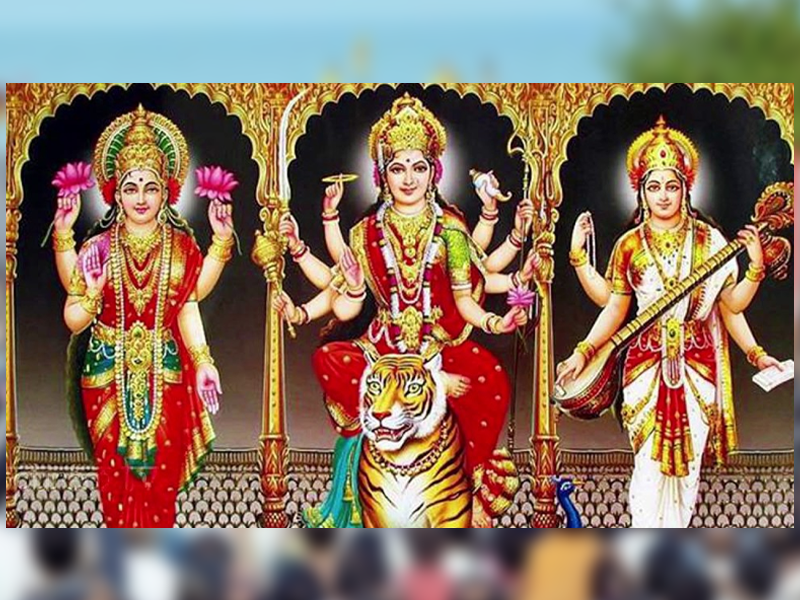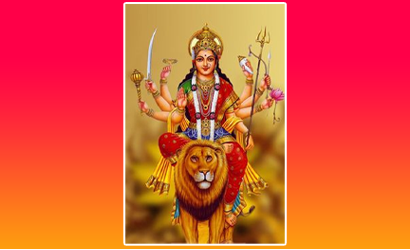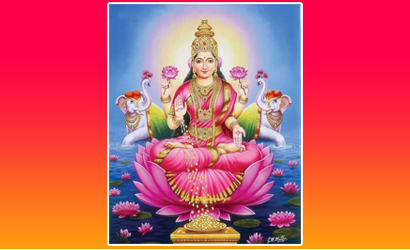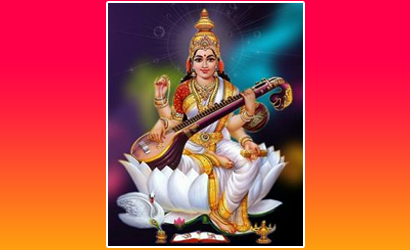
What Is Navaraththiri (Navaratri)
This culture is rooted in profound observations of the human system and its connections with the Earth, the Moon, the Sun, and various aspects of the Divine.This influence is evident in how and when festivals are celebrated. Navrathri translates to "nine nights," marking a period from the day after the new moon or Amavasai.These initial nine days of the lunar cycle are associated with femininity, representing a special time for Devi, symbolizing the feminine aspect of the Divine. The ninth day, Navami, stands out within this cycle. The time around the full moon is considered neutral, while the following eighteen days lean towards masculinity.The earlier phase of the month honors Devi, with all worship dedicated to her until Navami. There are twelve nine-day spans in a year, each focusing on a different facet of the feminine Divine or Devi. The Navraththiri around October holds significant importance as it honors Sarasvathy, the goddess of learning. Emphasizing learning above all else, this tradition values the human capacity for acquiring knowledge. While other creatures may excel in various abilities, human uniqueness lies in our ability to learn myriad skills and subjects, showcasing our potential for growth and development.
The significance of Navaratri Viratham
Bringing the feminine into daily life is essential in Indian culture, with rituals like fasting during Navaratri to increase consciousness and purification. The festival celebrates different aspects of the Devis, including gentle and fierce qualities. Indian culture worships strong women to honor intelligence and competence beyond just good behavior. Navaratri aims for individuals to reach their full potential, culminating in Vijayadashami, the day of victory.
Navaraththiri Viratham
Thurkkai, Lakshmi, and Saraswathi represent three facets of femininity, symbolizing the earth, the sun, and the moon,
(transcendence, knowledge, purity), respectively.
- Those seeking strength or power worship forms of the feminine like Mother Earth, Thurkkai, or Kali.
- Those aspiring for wealth, passion, or material abundance worship Lakshmi or the sun.
- Those striving for knowledge, dissolution, or transcending the limitations of the mortal body worship Saraswathi or the moon.
During Navratththiri, the nine days are aligned with these fundamental qualities. The first three days honor Thurkkai, the following three days are dedicated to Lakshmi, and the final three days to Saraswati.
Vijayadashami, the tenth day, symbolizes victory over these three aspects of life.
These representations go beyond symbolism and hold true energetically. Humans emerge from the earth, become active, and eventually return to inertia. This cycle is not exclusive to individuals but extends to galaxies and the universe. Yet, we possess the capacity to break this cycle.
The first two aspects of Devi are essential for human sustenance and well-being, while the third represents an aspiration to transcend and go beyond. To connect with Saraswathi, one must strive; otherwise, reaching her remains out of reach.



Significance of the First Three Days of Navraththiri (Thurkkai)
The first three days of the nine-night Hindu festival Navraththiri are dedicated to the worship of Goddess Thurkkai, one of the manifestations of the Divine Mother, Mahadevi. Thurkkai embodies the principles of protection and righteousness, symbolically likened to a moat that encircles and safeguards a palace.
In Hindu cosmology, Thurkkai’s protective aspects extend to the fundamental elements. When her power is associated with water, she is invoked as Strenth Thurkkai . Similarly, when her energy is linked to fire, she is revered as Agni Thurkkai (‘Agni’ meaning fire).
In the rich tapestry of Tamil culture and mythology, the fierce and protective aspect of the Goddess is known as Korravai. This name is etymologically linked to ‘Korram’, which means victory or triumph, underscoring her role as the vanquisher of evil forces.
Significance of the Second Three Days of Navraththiri (Maha Lakshmi)
The second triad of Navraththiri is devoted to the worship of Maha Lakshmi, the Goddess of wealth, prosperity, and good fortune.
In Hindu iconography, Maha Lakshmi is often depicted as residing on the chest of Lord Vishnu, the Preserver of the Universe.
However, her divine presence is not confined to this mythological representation alone. According to Hindu wisdom, Maha Lakshmi graces the homes of those who extend heartfelt hospitality to their guests.
This belief underscores a profound truth in Hindu philosophy: true wealth is not merely material but is also measured by the warmth and generosity one shows towards others. The act of welcoming guests with love and tending to their needs is seen as an invitation to Maha Lakshmi herself. It is believed that in such homes, where hospitality is a cherished virtue, the Goddess takes up permanent residence, blessing the household with abundance and auspiciousness.
This teaching serves multiple purposes in Hindu culture:
- It elevates the act of hospitality (known as ‘Atithi Devo Bhava,’ meaning ‘the guest is God’) to a sacred duty.
- It redefines wealth to include not just material riches, but also the richness of human relationships and the merit accrued through benevolent actions.
- It encourages the cultivation of a giving spirit, fostering a society built on kindness and mutual respect.
- It suggests that a home filled with love and generosity is already prosperous, attracting further blessings from the divine.
Thus, during these three days of Navratri, as devotees pray to Maha Lakshmi, they are also reminded to embody her qualities of abundance and benevolence in their interactions with others.
Significance of the Last Three Days of Navraththiri (Saraswathi)
The final triduum of Navraththiri is consecrated to the worship of Goddess Saraswathi, the divine embodiment of knowledge, arts, and wisdom.
The sequencing of Saraswathi’s worship at the conclusion of Navraththiri carries profound symbolism. In Hindu philosophy, life is viewed as a continuous school, with experiences—both joyous and sorrowful—serving as our teachers. Just as a student attains wisdom by assimilating lessons over time, we worship Saraswathi at the end of Navraththiri, signifying the distillation of wisdom from our life’s journey.
Saraswathi, often depicted with a veena (a stringed instrument) and a book, is not just the patron of academic knowledge. Her blessings are believed to encompass a broader spectrum of human intellect and expression. She is the muse of musicians, the inspiration of poets, and the guiding light of scholars. Her grace is sought for eloquence in speech, dexterity in art, and clarity in thought.
The festival of Vasant Panchami, heralding the arrival of spring, is dedicated to Saraswathi. On this day, devotees don yellow garments, a color symbolizing the blossoming of knowledge and the ripening of intellectual fruits. They offer pushpanjali (flowers), sweets, and heartfelt prayers to the Goddess, seeking her benevolent gaze upon their scholarly and artistic endeavors.
Interestingly, Saraswathi’s blessings are also seen as a path to self-sufficiency and inner harmony. It is said that one blessed by her can lead a fulfilling life without external dependencies. This notion aligns with the Hindu concept of ‘Atma Gyan’ (self-knowledge), where true enlightenment comes from within, guiding one through life’s labyrinth.
In essence, the worship of Goddess Saraswathi celebrates the eternal human quest for knowledge. It underscores the belief that education, in its broadest sense, is the most potent tool for personal growth and societal progress. As we conclude Navraththiri by invoking Saraswathi, we affirm that the lamp of learning, once lit, can illuminate not just our own paths, but cast its radiance far into the future, brightening the lives of generations to come.